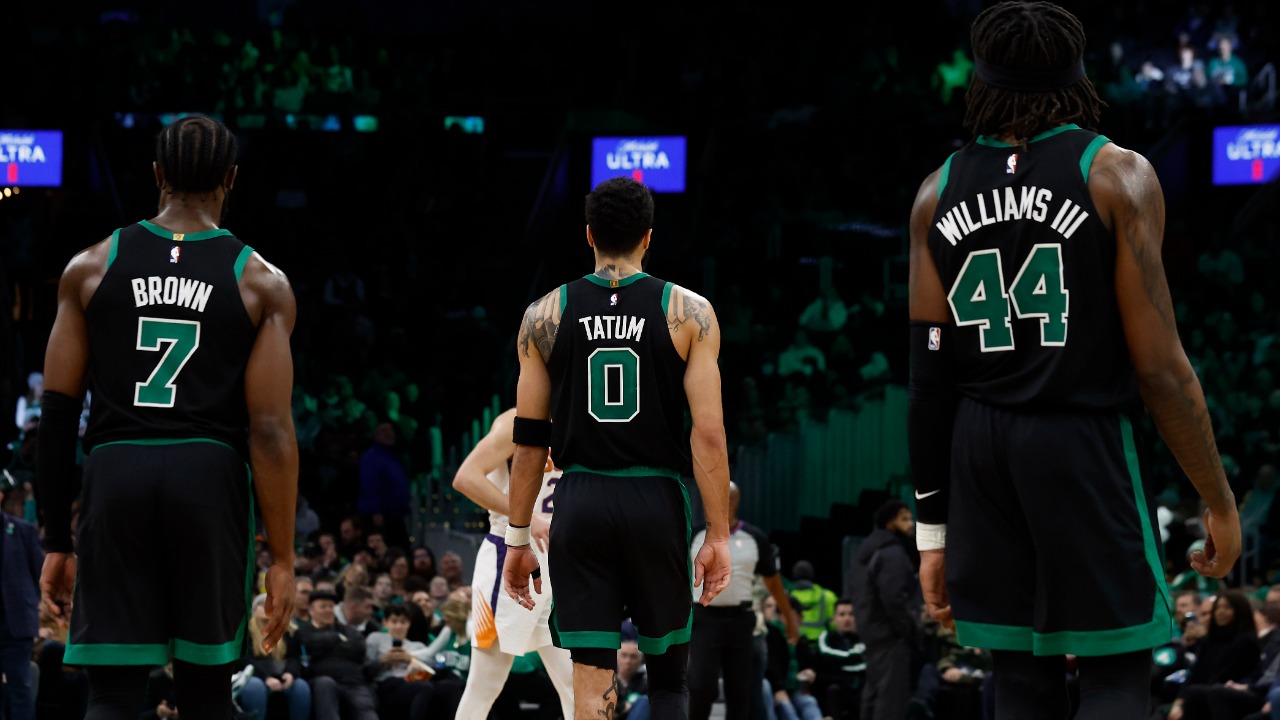It’s wild that, less than one year after the Boston Celtics' universally acclaimed move to add Malcolm Brogdon to the roster -- and just a month after Brogdon hoisted the Sixth Man of the Year trophy for being exactly the sort of bench jolt the Celtics needed -- president of basketball operations Brad Stevens now has to ponder whether the Celtics can afford to carry that player for the remainder of his deal.
A one-year easing of CBA restrictions -- along with the ramp to Jayson Tatum and Jaylen Brown's extensions -- could allow the Celtics to splurge again next season and simply run back much of the same team as last year.
Boston essentially would be kicking the decision can down the road while buying more time to fully determine the sustainability of a supermaxed Jays combo at the top of their roster.
Editor's Note: This is Part 3 of Chris Forsberg's five-part series on how the new CBA impacts the Celtics' future. You can read Parts 1 and 2 below.
Get New England news, weather forecasts and entertainment stories to your inbox. Sign up for NECN newsletters.
CHRIS FORSBERG'S CBA SERIES
But Boston can’t just blindly wait until that tipping point. Many of the big-spending teams around the league will be eager to shed salary before the new CBA kicks in for the 2024-25 season, and presumably, there will not be a lot of options to dump a $22 million contract like Brogdon next summer. The Celtics do have to consider staying ahead of the storm.
What’s more, Boston has to ponder its spending and its roster balance. The addition of Brogdon bolstered the second unit but also left the team heavy on high-cost guards. Head coach Joe Mazzulla struggled to find time for both Brogdon and Derrick White at the end of games, particularly when Marcus Smart was a staple of crunch time.
Given Boston’s need to upgrade its frontcourt depth, would it be better for the team to consider flipping one of its high-priced guards for, say, big-man depth and an overall cost savings that helps them stay under the second apron the next couple of seasons?
Stevens at least acknowledged the need to assess his team's roster balance.
"I think you always have to look for people that fit well with your best players, that accentuate your best players, and then put that team and that group together," Stevens told NBC Sports Boston. "Not having [center] Rob [Williams III] for the better half of [last] season -- I actually thought our depth bigs did a great job all year of giving us a chance to have a great seed and be a top seed in the East and fill those minutes and fill those times."
"But I thought that we had a lot of guys that were on the perimeter and a lot of guys that could help us on the perimeter. And we just have to look at everything and figure out, OK, how does it all fit together? Is it as good of a fit as it can be? Obviously, we can't always predict health, but we have to make ourselves as fortified as possible, both on the perimeter and on the interior."
Can the Celtics trust that soon-to-be 35-year-old Danilo Gallinari can be a contributor coming off the ACL rehab that cost him his 2022-23 season? Can Boston afford an early extension with White after he was the Celtics’ third best player for most of last season?
Would Payton Pritchard, after a frustration-filled 2022-23 season, be willing to stick around if more guard minutes opened this year? How can Boston improve its frontcourt talent given the health concerns around Williams III and a 37-year-old Al Horford?
All those questions loom before Boston even deals with its main free-agent decision.
Stay tuned Thursday for Part 4 of Forsberg's CBA series: What's next for Grant Williams?



